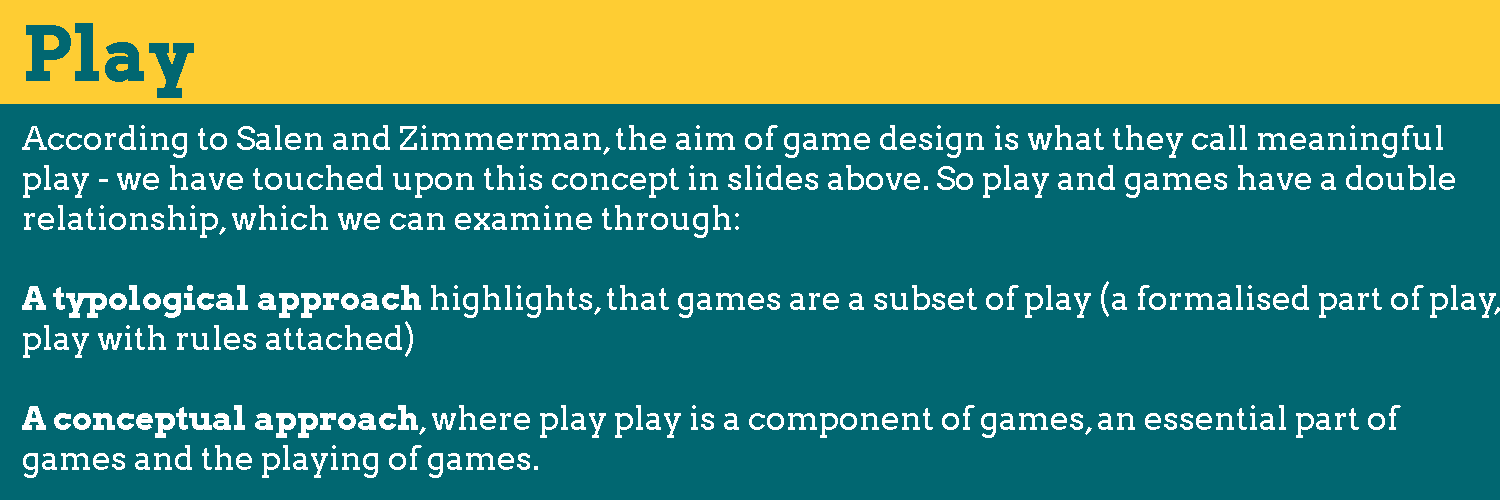1.2 Game design schemas: artefacts, interaction and culture
In the following sections we will focus on games through the lense of Game Design Schemas. In Rules of Play Salen and Zimmerman introduces a framework which allows us to explore games through different perspectives.
1.2.2 Play and Ludus, Paidia
 |
| Core Concept: Play (click to enlarge) |
Before we continue, we need to introduce another core concept here: Play. Play is a notoriously difficult concept to define; it is a culturally and socially specific idea. Traditionally play as been seen as autotelic (we engage in play for the sake of play) and something we do for fun, when we are not serious, not working or not behaving as adults in a proper manner. In short; nothing could really be gained from play. But many play scholars (including Huizinga and Caillois) sees play as key to cultural development and socialisation as by playing together, people form close communities and develop a group identity and a sense of belonging. Play can also function as a tool to understand the self. Many anthropologists like Sutton-Smith have argued that play is the way children work out social and cultural norms. So play is an essential aspect of many human and cultural practices and spheres.
 |
| Ludus, Paidia (click to enlarge) |
This distinction is a means of differentiating between playing a game and playing. Ludus and paidia are attitudes towards an activity - playing or gaming - which often overlap.Ludification and paidiafication of culture and society means that we increasingly engage and connect with each other and society in gameful and playful ways: From gamification, which highlights the different ways in which games’ elements and gamefulness’ principles are utilized in designing services and products, to a playful mindset or approach we engage the world around us with, playfulness encourages testing, and creative problem-solving – both as identities we playfully perform end explore in online games, but more generally in everyday lives.
For an example on how to analyse with the lenses: watch this "Extra Credits" video on how the game of Snakes and Ladders have change over time - which is a way of examining the game through the lense of culture: Extra Credits “Snakes and Ladders - How the Meaning of an Ancient Children's Game Adapted Over Time”:
|
Snakes and Ladders - How the Meaning of an Ancient Children's Game Adapted Over Time - |
Reference
- Caillois, R. (1958): Man, play, and games. The Free Press, Glencoe, New York.
- Huizinga, J. (1950/1944): Homo Ludens. The Beacon Press, Boston.

